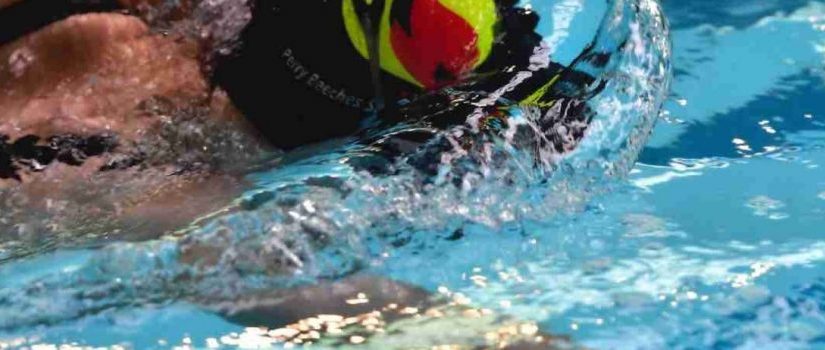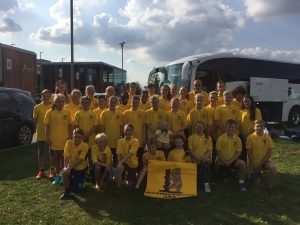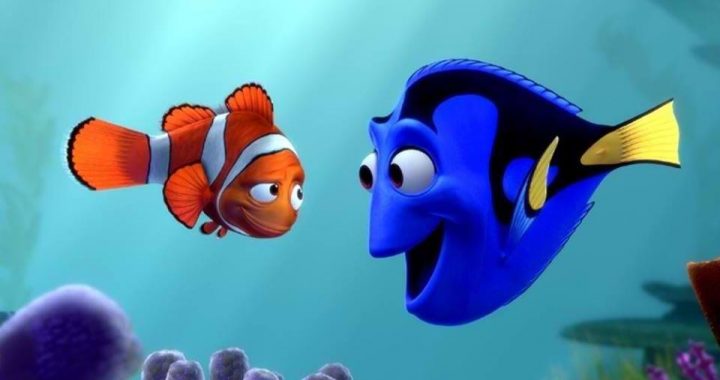It was a Fun Filled night at Stechford for Helen Pordage and her Junior Squad, who had qualified for the Junior League ‘Final’ for the second year in a row – last year into the Division 3 final and this year into the Division 2 final, qualifying in 6th place. The team finished in 5th place on the night, so gained a pace on their entry position – making for a very happy coach.
There were 7 wins on the night – they went to:
 The girls 10 year old relay team (Kianna Hughes, Kadijah Cox, Carys Higgins and Sophie Mason); Harvey Higgins – who won both the 12/under Breaststroke and Freestyle in impressive style; the girls 10 year old Freestyle relay team (Kianna Hughes, Kadijah Cox, Carys Higgins and Sai Ashman); Carys Higgins (10/under Backstroke); The Boys 12/under relay team (Ellison Hart, Harvey Higgins, Lewis Carless and Vinaye Gaddu) who won both the Freestyle and Medley relays.
The girls 10 year old relay team (Kianna Hughes, Kadijah Cox, Carys Higgins and Sophie Mason); Harvey Higgins – who won both the 12/under Breaststroke and Freestyle in impressive style; the girls 10 year old Freestyle relay team (Kianna Hughes, Kadijah Cox, Carys Higgins and Sai Ashman); Carys Higgins (10/under Backstroke); The Boys 12/under relay team (Ellison Hart, Harvey Higgins, Lewis Carless and Vinaye Gaddu) who won both the Freestyle and Medley relays.
Other top 3 finishers were:
Kianna Hughes (3rd 10/under Freestyle); Joel Harris (2nd 9/under Breastroke and 9/under Butterfly); Becky Gulliver (2nd 12/under Backstroke); Kadijha Cox (3rd 10/under Breaststroke); Boys 9 years medley relay team (2nd Sebastian Deans, Joel Harris, Harry McGovern and Toby Fisher); Boys 9 years Freestyle Relay team (2nd Sebastian Deans, Joel Harris, Harry McGovern and Billy Martin); Sophia Deans (3rd 12/under Breaststroke); The Girls 8 by 1 Freestyle relay team (3rd Eva Chikurunhe, Isla Lawson, Kianna Hughes, Kadijha Cox, Abbie Fuller, Carys Higgins, Becky Gulliver and Sophia Deans); Billy Martin (3rd 9 years Freestyle); The girls 12/under Freestyle relay (3rd Catrise Hart, Trearna Hart, Becky Gulliver and Sophia Deans); Carys Higgins (2nd 10/under Butterfly).
Every single member of the team made up a piece of the jigsaw – a big thank you to everyone who swam and supported the club at the same time.
Big thanks to coach Helen Pordage, Stewards Kal Gaddu, Jamie Keyte and Katie Gulliver, Yvonne Rimmer for her judging, and Sareena Gaddu and Mandy Blizard for timekeeping. Without whom none of this would be possible.

































